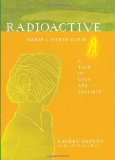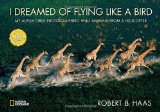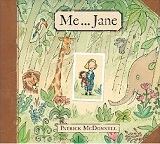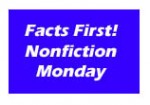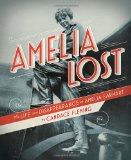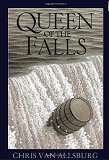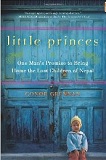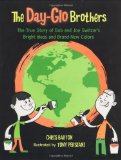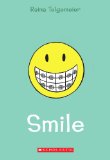Review of Radioactive, by Lauren Redness
Marie & Pierre Curie
A Tale of Love and Fallout
by Lauren Redniss
!t Books (HarperCollins), 2011. 205 pages.
Starred Review
This book is amazing, and like no book I’ve ever read before. It’s a biography, a record of love and scientific discovery, but it’s also a work of art.
There are striking images on almost every page. The artist used cyanotype printing, which she explains in a note at the back.
“Using this process to create the images in this book made sense to me for a number of reasons. First, the negative of an image gives an impression of an internal light, a sense of glowing that I felt captured what Marie Curie called radium’s ‘spontaneous luminosity.’ Indeed, the light that radium emits is a cyan-like, faint blue. Second, because photographic imaging was central to the discovery both of X-rays and of radioactivity, it seemed fitting to use a process based on the idea of exposure. Last, I later learned, Prussian blue capsules are approved by the U.S. Food and Drug Administration as a “safe and effective” treatment for internal contamination by radioactive cesium and radioactive thallium. (After the Chernobyl nuclear disaster, cyanotype ingredients were spread on the grass in North Wales to safeguard grazing animals.)”
The story told in the book is also fascinating. She tells how Marie met Pierre Curie and their progress in science together. She tells about Pierre Curie’s tragic death and Marie’s life afterward and continued distinguished work. Throughout the story, she provides images and clips and stories about things that happened with radioactivity later, such as Hiroshima, Three Mile Island, and Chernobyl.
I had no idea how radium was touted and marvelled over when it was first developed. The Curies did not patent their findings, but others were not so scrupulous.
“A fictitious Dr. Alfred Curie was hatched to shill Tho-Radia face cream. Radium-laced toothpaste, condoms, suppositories, chocolates, pillows, bath salts, and cigarettes were marketed as bestowers of longevity, virility, and an all-over salubrious flush.
“Radium was also touted as a replacement for electric lighting. Early electric light was both brilliant and blinding. Robert Louis Stevenson wrote, ‘Such a light as this should shine only on murders and public crime, or along the corridors of lunatic asylums, a horror to heighten horror.’ Even after the development of softer, incandescent bulbs, some lamented that electric light would ‘never allow us to dream the dreams that the light of the living oil lamp conjured up.’ The fragile glow of radium, on the other hand, offered a retreat into forgiving shadows and candlelit intimacy. Radium let the wistful romantic pose as champion of scientific advance. A chemist named Sabin von Sochocky concocted a luminous goulash of radium and zinc sulphide, with dashes of lead, copper, uranium, manganese, thallium (a neurotoxin discovered by chemist and Spiritualist William Crookes), and arsenic, and sold it to the public as ‘Undark Paint.’ Undark was marketed for use on flashlights, doorbells, even ‘the buckles of bedroom slippers.’ ‘The time will doubtless come,’ von Sochocky declared, ‘when you will have in your own house a room lighted entirely by radium. The light thrown off by radium paint on walls and ceilings would in color and tone be like soft moonlight.'”
The story is fascinating and surprising. The images are stunning and memorable. This book is definitely not for children, but if it were, I would think this was a sure winner of the Caldecott Medal for the most distinguished picture book providing a visual experience. Spend a little time gazing at the pages of this book, and you will be amazed. Spend a little time reading the pages of this book, and you will be intrigued.
Find this review on Sonderbooks at: www.sonderbooks.com/Nonfiction/radioactive.html
Disclosure: I am an Amazon Affiliate, and will earn a small percentage if you order a book on Amazon after clicking through from my site.
Source: This review is based on a library book from the Fairfax County Public Library.
